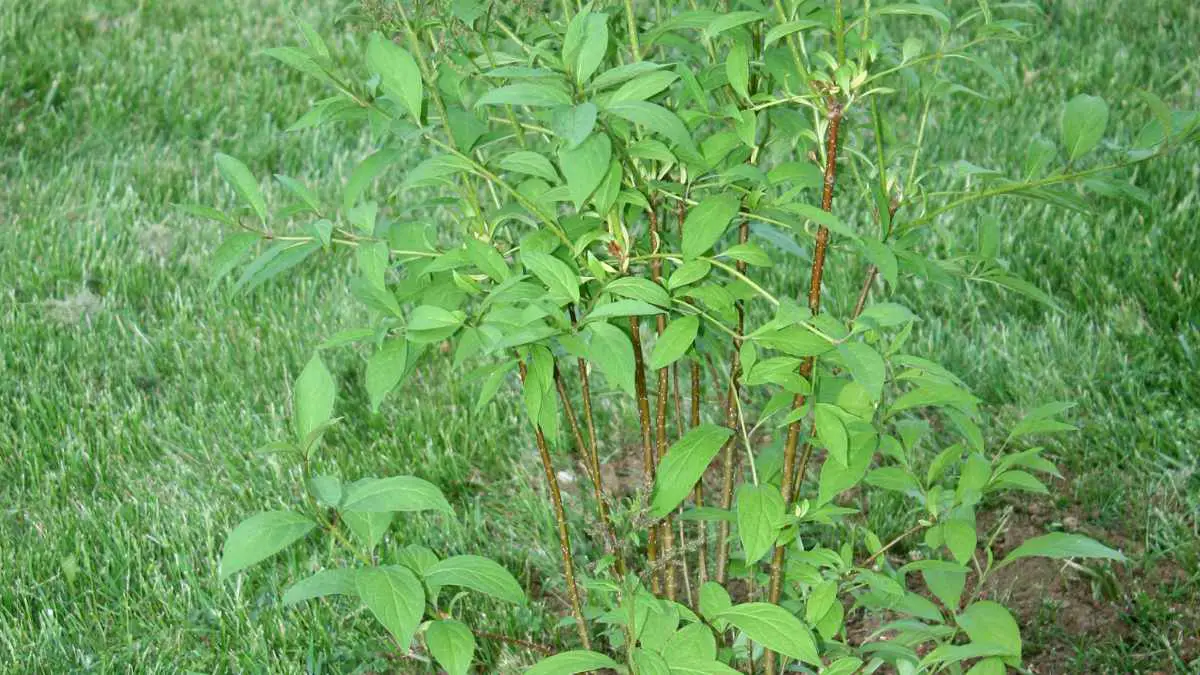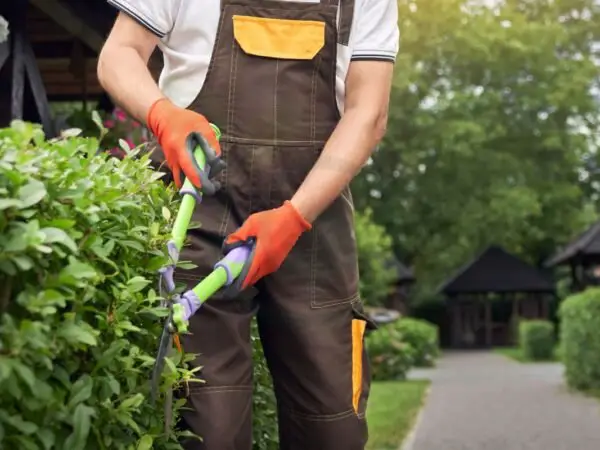Are your lilac bushes not flowering as expected? Wondering what could be causing this issue? Don't fret, as we've got you covered.
If your once vibrant lilac bush, like other flowering shrubs, is failing to bloom due to late freeze, various factors could be at play. From improper pruning techniques to inadequate sunlight or nutrient deficiencies, understanding the root cause is crucial in restoring your lilac's blooming beauty. Stay tuned for expert insights and practical tips on reviving your lilac shrubs, rejuvenation prune their stems, and bringing back their delightful blossoms.
Key Takeaways
- Prune properly: Regularly prune your lilac bush to remove old wood and encourage new growth, which can lead to more blooms.
- Check sunlight: Ensure your lilac bush receives adequate sunlight, at least 6 hours a day, to promote healthy blooming.
- Focus on soil health: Maintain well-draining soil with proper pH levels (around 6.5) to support the lilac bush's growth and flowering.
- Water wisely: Water deeply but infrequently, allowing the soil to dry out between watering sessions to prevent root rot.
- Fertilize strategically: Apply a balanced fertilizer in early spring to provide essential nutrients for blooming without overstimulating excessive foliage growth.
- Seasonal adjustments: Tailor care practices based on the season, adjusting watering, pruning, and fertilization techniques accordingly to support blooming.
Understanding Lilacs
Growth Cycle
Lilacs follow a specific growth cycle that influences their blooming. Understanding this cycle helps predict when your lilac bush will flower. Typically, lilacs bloom once a year in the spring. The growth cycle involves dormant winter months followed by budding and flowering in the spring.
To ensure optimal blooming, monitor your lilac bush closely to know when to expect flowers. Blooms usually appear after the plant has gone through its winter dormancy period. By keeping track of the growth cycle, you can anticipate and enjoy the beautiful blossoms.
The growth cycle directly impacts the blooming phase of lilac bushes. Learning how this cycle works allows you to prepare adequately for the flowering season. Proper care during each stage of the growth cycle ensures vibrant and abundant blooms on your lilac bush.
Sunlight Needs
For healthy blooming, it's essential to provide your lilac bush with adequate sunlight exposure. Ensuring that your plant receives enough sunlight is crucial for robust flower production. Lilacs typically require at least 6 hours of direct sunlight daily.
Identify the minimum sunlight requirements for your lilac bush to thrive and bloom successfully. Implementing strategies such as pruning surrounding trees or plants can help optimize sunlight exposure for your lilac bush. Adequate sunlight is vital for photosynthesis and overall plant health.
Soil Preferences
Exploring the ideal soil conditions for lilac bushes is key to promoting flowering. Understanding how soil quality affects blooming helps you create a suitable environment for your plant. Lilacs prefer well-draining soil with a slightly acidic pH level.
Adjusting soil conditions can significantly impact the quality and quantity of blooms on your lilac bush. By ensuring proper drainage and adding organic matter to enrich the soil, you can enhance flowering outcomes. Maintaining optimal soil conditions is essential for healthy root development and overall plant vitality.
Common Blooming Issues
Insufficient Sunlight
Lilac bushes not flowering can be a result of insufficient sunlight. Look for signs like sparse blooms or weak growth. To address this, trim nearby trees or shrubs that may be blocking sunlight.
To combat sunlight deficiencies, consider transplanting the lilac bush to a sunnier spot. prune surrounding plants to allow more light to reach the lilac.
Incorrect Pruning
Incorrect pruning is a common mistake that can hinder lilac blooming. Avoid cutting off flower buds by pruning at the wrong time. Follow proper techniques such as removing dead wood and crossing branches.
Improper pruning impacts blooming by removing potential flower buds. To encourage flowering, prune right after blooming season ends and avoid over-pruning.
Poor Soil Conditions
Poor soil quality can also impact lilac flowering. Look for signs like yellowing leaves or stunted growth. Improve soil health by adding organic matter like compost or mulch around the base of the bush.
To enhance soil conditions, conduct a soil test to determine nutrient deficiencies, then amend accordingly. Remember, good soil health is crucial for the overall well-being of your lilac bush.
Sunlight and Blooming
Ideal Exposure
To ensure optimal lilac blooming, it's crucial to determine the best exposure for your plant. Understanding how exposure influences flower production is key. Implementing strategies to provide your lilac bush with the ideal exposure can significantly impact its blooming cycle.
When considering ideal exposure, take into account the full sun requirements of lilac bushes. Positioning your plant in an area that receives ample sunlight is essential for healthy foliage and abundant blooms. By placing your lilac bush in a sunny spot, you create a favorable environment for sweet-smelling flowers.
Sunlight Tips
For maximizing sunlight absorption, consider practical tips to enhance your lilac bush's blooming potential. Positioning your plant in an area that receives full sun is crucial for its growth and flowering. Ensure that there are no obstructions blocking sunlight from reaching the shrub.
To optimize sunlight exposure, trim any nearby trees or shrubs that may be casting shadows on your lilac bush. By allowing sufficient sunlight to reach the plant, you promote healthy growth and vibrant blooms. Remember that proper sunlight exposure is essential for attracting birds and enhancing the overall beauty of your garden.
Soil and Health
Soil Acidity
Understanding soil acidity is crucial for lilac blooming. Measure pH levels to adjust them effectively. Create an ideal acidic environment for your lilac bush by implementing specific strategies.
Maintaining the right soil pH level is key to promoting healthy blooms in lilac bushes. Testing kits are available to accurately measure the soil's acidity. Adjusting pH levels can be done by adding materials like sulfur or lime.
To create an optimal acidic environment, consider incorporating organic matter into the soil. Mulching with pine needles or oak leaves can help maintain acidity. Regularly monitoring and adjusting pH levels ensures a conducive environment for lilac flowering.
Nutrient Balance
A balanced nutrient profile is vital for lilac flowering. Essential nutrients such as nitrogen, phosphorus, and potassium support healthy blooms. Maintaining proper nutrient balance in the soil is essential for robust growth.
Nitrogen is crucial for foliage development in lilacs, while phosphorus aids in flower production. Potassium contributes to overall plant health and disease resistance. Regularly testing soil nutrients and applying fertilizers accordingly is key to ensuring a balanced nutrient profile.
To maintain optimal nutrient balance, consider using a balanced fertilizer specifically formulated for flowering plants. Avoid excessive use of nitrogen-rich fertilizers, as this can inhibit flower production. Regularly assessing the soil's nutrient content helps prevent deficiencies that may impact blooming.
Pruning Practices
Best Time
Determining the ideal timing for pruning lilac bushes is crucial for promoting blooming. Understanding the significance of timing helps in ensuring that the plant's energy is directed towards flower production. Knowing when to perform maintenance tasks, such as deadheading spent blooms, will result in optimal results and a healthier plant overall.
Pruning Tips
Discovering effective pruning tips is essential for encouraging lilac flowering. Learning about the correct tools and techniques, such as using sharp bypass pruners to make clean cuts without damaging the plant, is key to successful pruning. Implementing a pruning schedule throughout the year will support blooming by removing dead wood and promoting new growth.
Watering and Fertilization
Watering Schedule
Establish a consistent watering routine for your lilac bush to ensure proper hydration for optimal growth. Understanding the impact of watering on blooming is crucial; inadequate water can lead to poor flowering. Adjust your watering practices based on the plant's needs for optimal flower production.
Fertilizer Types
Explore various fertilizer options suitable for lilac bushes, including organic and synthetic choices. Fertilizers play a vital role in promoting blooming by providing essential nutrients for healthy growth. Select the right fertilizer based on your plant's specific needs to support robust flowering.
Encouraging Blooms
Stimulating Growth
To stimulate growth and flowering in lilac bushes, ensure they receive adequate sunlight, ideally around six hours daily. Prune the bushes after flowering to encourage new growth. fertilize with a balanced fertilizer in early spring to support healthy development.
Implement strategies such as proper watering to keep the soil moist but not waterlogged. Mulching around the base of the lilac bush helps retain moisture and regulate soil temperature. Regularly inspect for any signs of pests or diseases that may hinder growth and blooming.
Learn about techniques like deadheading faded flowers to redirect energy into new bud formation. Consider adding organic matter such as compost to improve soil quality and provide essential nutrients for robust growth and abundant blooms.
Bloom Boosters
Explore natural bloom boosters like bone meal or compost tea to enrich the soil with nutrients vital for flower production. Commercial bloom boosters containing phosphorus can also enhance blooming in lilac bushes. Apply these boosters according to package instructions for optimal results.
Understand how bloom boosters work by providing essential nutrients that promote flower formation and overall plant health. These supplements can help overcome nutrient deficiencies that may impede blooming, leading to a more vibrant and prolific display of flowers on your lilac bushes.
Learn how to apply bloom boosters effectively by following recommended dosages and application timings. Avoid over-fertilizing, as this can harm the plants rather than stimulate blooming. Monitor the response of your lilac bushes to the bloom boosters and adjust application if necessary for best outcomes.
Seasonal Care Guide
Spring Care
Spring is a crucial time to prepare your lilac bush for blooming. Ensure proper care practices to support flower development. Optimize conditions for successful blooming by providing adequate sunlight and watering.
Summer Maintenance
During the summer, it's essential to maintain your lilac bush for continuous blooming. Implement regular care routines such as pruning faded flowers and providing sufficient water. Address common issues like pests or diseases promptly to ensure healthy growth.
Fall Preparation
As fall approaches, prepare your lilac bush for the next blooming season. Implement maintenance tasks like fertilizing and mulching to promote healthy growth. Setting the stage now will help your lilac bush bloom successfully next year.
Expert Care Tips
Pest Management
Common pests like aphids and scale insects can harm lilac bushes, leading to poor blooming. To protect your plant, regularly inspect for pest presence. Implement strategies such as pruning affected areas and using natural predators like ladybugs.
To prevent infestations, maintain good garden hygiene by removing debris and weeds. Consider using insecticidal soaps or neem oil as organic solutions. These methods can effectively control pests without harming the environment.
Disease Prevention
Diseases like powdery mildew and bacterial blight are common culprits behind lilac bloom issues. Keep your plant healthy by ensuring proper air circulation and avoiding overhead watering. Regularly check for symptoms such as yellowing leaves or black spots.
Prevent diseases by planting lilacs in well-draining soil and providing adequate sunlight. Prune any infected parts promptly to stop the spread of diseases. Applying a fungicide as a preventive measure can also help maintain your lilac's health.
Final Remarks
Ensuring your lilac bushes bloom vibrantly involves understanding their needs, from sunlight requirements to proper pruning techniques. By addressing common blooming issues and maintaining soil health, you set the stage for a flourishing display of lilac flowers. Remember to water and fertilize judiciously, follow seasonal care guidelines diligently, and implement expert tips for optimal results. Your commitment to these practices will yield beautiful blooms that enhance your outdoor space.
Take charge of your lilac bushes' blooming potential by applying the knowledge and strategies shared in this guide. With a proactive approach to care and a focus on meeting their specific needs, you can enjoy a bounty of colorful blossoms year after year. Share these insights with fellow gardeners to spread the joy of successful lilac cultivation.
Frequently Asked Questions
How can I encourage my lilac bush to bloom?
To encourage blooming, ensure your lilac bush receives adequate sunlight, prune it properly after flowering, maintain well-draining soil with proper pH levels, and fertilize with a balanced fertilizer in the early spring. Consistent watering during dry spells also helps promote blooms.
What common issues can prevent a lilac bush from flowering?
Common issues that can hinder lilac blooming include insufficient sunlight, improper pruning time or technique, poor soil quality, lack of nutrients, over-fertilization, and extreme weather conditions. Addressing these factors can help improve blooming in your lilac bush.
When is the best time to prune a lilac bush for optimal blooming?
Prune your lilac bush immediately after it flowers in late spring or early summer. Avoid pruning in fall or winter as this can remove potential flower buds for the next season. Proper pruning techniques like removing old wood and spent blooms can stimulate new growth and enhance blooming.
How should I water and fertilize my lilac bush to promote flowering?
Water your lilac bush deeply but infrequently, allowing the soil to dry out slightly between waterings. Fertilize in early spring with a balanced fertilizer specifically formulated for flowering shrubs. Avoid over-fertilizing as excessive nutrients can inhibit blooming and lead to other plant health issues.
What are some expert care tips for maintaining healthy and blooming lilac bushes?
Experts recommend planting lilacs in well-draining soil with good air circulation around the plant. Regularly monitor soil moisture levels, pH balance, and overall plant health. Conduct yearly pruning to remove dead wood and shape the plant for optimal growth and flowering.
Image Source: Paid image from CANVA





